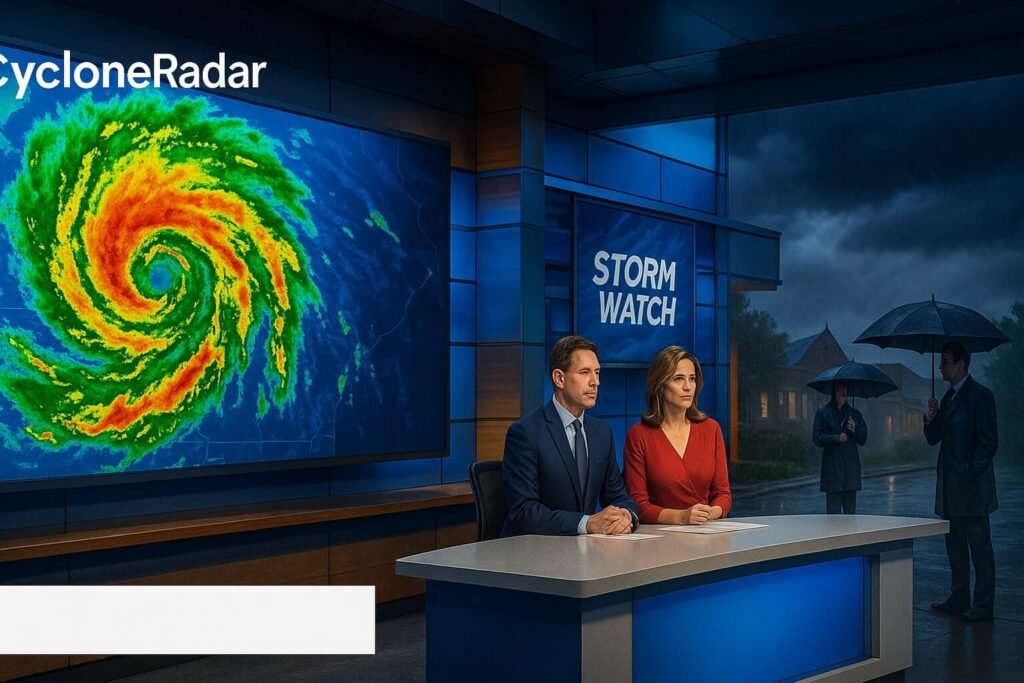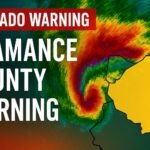When weather turns wild in North Carolina, one name cuts through the static with clarity, precision, and a track record that locals trust. That name is WRAL News. With decades of storm-hardened experience and a fearless embrace of new technology, WRAL has become more than just a broadcaster. It’s a lifeline during moments like Tropical Storm Chantal, when skies darken, alerts flood phones, and communities look for solid footing.
In early July 2025, WRAL News once again found itself in the storm’s path. As Chantal crept up the Carolina coastline, its effects were sudden, widespread, and at times frightening. Flash flooding turned streets into rivers. Tornado warnings buzzed across counties. Families huddled indoors as alerts kept stacking, some in areas that rarely see tornadic activity. While the national headlines zeroed in on Chantal’s rain totals and weakening trajectory, WRAL News was live on the ground, tracking each cell as it rotated across rooftops and pine fields.
A Digital-First Storm Response
WRAL’s strength isn’t just its on-air broadcast. It’s the digital ecosystem that surrounds it. Viewers didn’t have to wait for the 6 PM news to see what was happening. With WRAL’s mobile app and WRAL News+ streaming service, people could tap in from their phones or smart TVs at any hour. From Chatham County to Carteret, live Doppler radar feeds, reporter check-ins, and emergency alerts kept flowing in real-time. WRAL’s team of meteorologists, anchored by professionals like Elizabeth Gardner, delivered updates not only with accuracy but with calm, measured tone. No hype, just facts. That’s what viewers have come to rely on.
It wasn’t just the coverage itself that stood out. The way WRAL News layered information across platforms (TV, social, mobile, and web) meant the message hit more homes, more quickly. As the storm’s remnants swept through Fayetteville and then bled into Virginia, WRAL continued to update evacuation zones, power outage maps, and rainfall data without pause. The commitment didn’t stop when the rain did.
Technology and Trust in Action
WRAL News has a long history of pioneering tech in broadcasting. It was the first American station to broadcast in HD in the 1990s. Later, it launched full-time NextGen TV (ATSC 3.0) service, placing itself on the edge of broadcast innovation. This isn’t just trivia. During Chantal, WRAL’s DualDoppler 5000 radar gave meteorologists a sharper view of rain bands and embedded tornado signatures before warnings were issued. That clarity mattered. Especially in eastern counties, where minutes count, early alerts made a difference for people in low-lying areas who needed to move fast.
WRAL’s Sky 5 helicopter was in the air when conditions allowed, capturing flooded farmland and washed-out roads that would otherwise go unseen. Ground crews positioned across multiple counties shared everything from wind-whipped palm trees on the coast to uprooted oaks in suburban Raleigh. This isn’t just high-tech for the sake of it. It’s storytelling in a crisis, built on speed, safety, and scale.
What makes WRAL News unique isn’t just the gear. It’s the people who run it. Some of the most trusted names in North Carolina broadcasting have passed through WRAL’s newsroom. Debra Morgan, who recently wrapped up a 32-year career with the station, leaves behind a legacy of clarity and care. That tone still echoes in the way the newsroom operates. There’s urgency, but not panic. There’s warmth, but no fluff. This balance is rare, and WRAL’s coverage of Chantal showed why it matters.
Beyond the Broadcast
Long after the floodwaters from Chantal began to recede, WRAL News kept reporting. They weren’t just chasing headlines. They were digging into recovery stories, state-level floodplain mapping failures, and how repeated storm events are reshaping insurance availability in parts of North Carolina. This kind of follow-through is why WRAL isn’t just a station people tune into during a storm. It’s a station they return to after, when answers are needed most.
The WRAL website offered interactive storm tracks, detailed community-by-community recaps, and archives of all Chantal-related alerts. WRAL News+ ran nightly summaries to help residents understand FEMA assistance and local rebuilding timelines. This is where tech, journalism, and public service merge in a way few other local outlets achieve.
What’s also worth noting is how WRAL has maintained independence. It’s owned by Capitol Broadcasting Company, a local family-run operation, not a national chain. That allows the newsroom to pivot quickly, innovate freely, and reinvest in its community instead of answering to quarterly earnings calls. It’s local news done right: modern, mobile, and meaningful.
WRAL News and the Road Ahead
Storms like Chantal are part of a pattern that’s becoming more common. Warmer oceans. Wetter systems. Sudden tornado outbreaks in places that didn’t see them before. These changes demand more than just weather apps and sirens. They demand newsrooms that understand both the science and the people behind the stories. WRAL News has proven it can be that newsroom.
From anchoring hurricane coverage to exposing infrastructure gaps, WRAL brings the full package, fast reporting, trustworthy voices, and long-range vision. As the NextGen TV revolution continues to unfold, WRAL is already there, adapting and leading. For viewers in the Carolinas, that means when the next alert comes through, the voice on the other end won’t be a stranger. It’ll be the one they’ve counted on for decades.
For those watching outside of North Carolina, the WRAL model is a case study in how local journalism can stay vital in the digital age. It’s about trust. It’s about innovation. And, more than anything, it’s about showing up (again and again) when the skies begin to spin.


